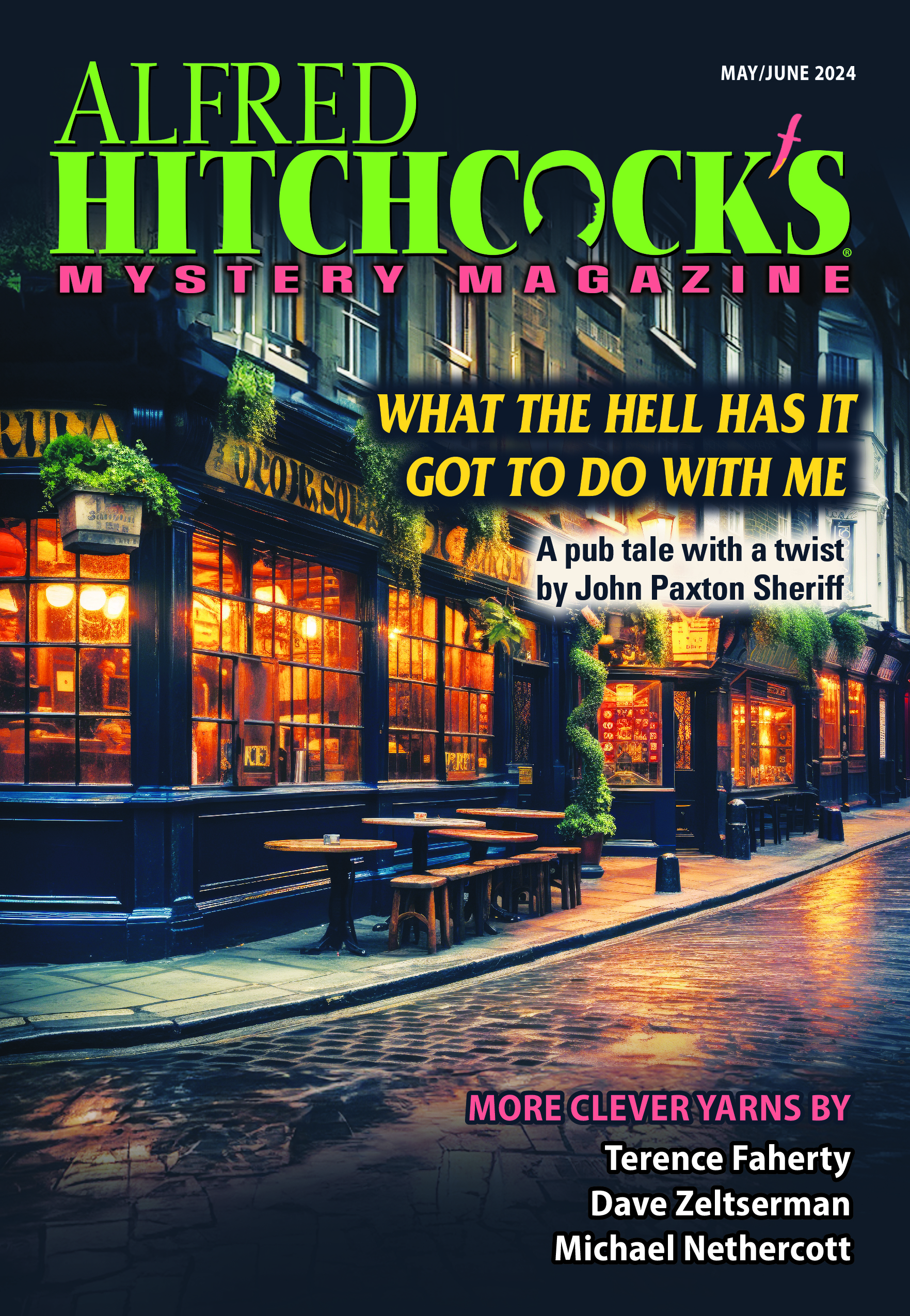With our current issue, we are excited to welcome to our pages a new puzzle series: Mixed-Up Anagrams by Mark Lagasse. Mark is a longtime colleague at Dell Magazines and friend to the mystery-fiction titles. Here, we talk with Mark about mysteries, puzzles, and his career—and even get a tip for solving anagrams.
 AHMM: Have you always been a fan of word puzzles?
AHMM: Have you always been a fan of word puzzles?
Mark Lagasse: One of my earliest memories is of me emceeing the boxed home versions of TV game shows (with my sisters as contestants) before I was four years old. A little later, I solved my first crossword in a newspaper and I was hooked. There’s never been a day in my life since when I didn’t solve some kind of puzzle or play a game.
AH: What about mysteries?
ML: I adore mysteries and have read thousands.
AH: If you can pick, what’s your favorite mystery work or author?
ML: There’s no doubt: Rex Stout. The relationship that developed over 40 years between Nero Wolfe and Archie Goodwin was complicated, nuanced, funny, and, most importantly, real; these two can easily stand among the most brilliantly defined characters of all fiction. Now, some people find Stout’s plots shaky and his suspects inadequately differentiated. Still, most readers can’t deny that they are chiefly enjoying the novels and novellas for Wolfe, Archie, Fritz, Inspector Cramer, and of course, Wolfe’s brownstone (a character in itself).
I’m also a huge fan of Agatha Christie, Sue Grafton, Josephine Tey, Stuart Kaminsky, and Lawrence Block. In terms of crime fiction, Patricia Highsmith and James M. Cain reign supreme.
AH: How did you get started constructing and editing puzzles professionally?
ML: I’d been constructing all kinds of puzzles for my own (and friends’) amusement since I was five. Naturally, I bought and devoured hundreds of puzzle magazines published by both Dell and Penny Press. After a BS in management, an MBA, and a couple of years in consulting and banking (all probably misguided), in 1987 I finally wised up and applied to Dell Puzzle Magazines for an assistant-editor job. My résumé was accompanied by a puzzle I made that argued why I would be a good hire; it must have worked because I got the position and have been at Dell for nearly 31 years, today as a Senior Executive Editor.
AH: And your favorite type of puzzle to work? What about your favorite to construct or edit—is it the same?
ML: Dell Puzzle Magazines features hundreds of different variety puzzles, so picking a favorite is tough. I will say I love to solve crosswords, specialty Sudoku, anagram-based material, and Anacrostics. And as corny as it might sound, I’ve never encountered a puzzle I didn’t like to construct.
AH: How do you think the two genres or forms of mystery and puzzles connect?
ML: As Lorenz Hart wrote, “If you asked me, I could write a book” on this subject, as the genres overlap a lot. To be brief, I believe that mysteries and puzzles require both the left and right sides of our brain. We must rationally, deductively, even coldly unravel problems that are presented in a highly artistic, entertaining medium. Furthermore, life doesn’t always provide straightforward solutions or satisfying conclusions; mysteries and puzzles (if done correctly) do. Deriving fun and a sense of accomplishment from mere thinking are rare treats nowadays!
AH: Can you offer a tip for solving anagram puzzles?
ML: Some folks haul out their Scrabble sets and rearrange the tiles to gain a foothold, and others jot the given letters in the margin and scramble them there. It’s key to take into account what exactly you’re forming. For names of characters, for example, a J may lead you to JOHN, JAMES, JACK, JANE, etc. In the November-December 2018 issue, when the answers to Scrambled Grafton will be titles of Kinsey Millhone books, it will be very helpful to realize that each entry will contain IS FOR.

